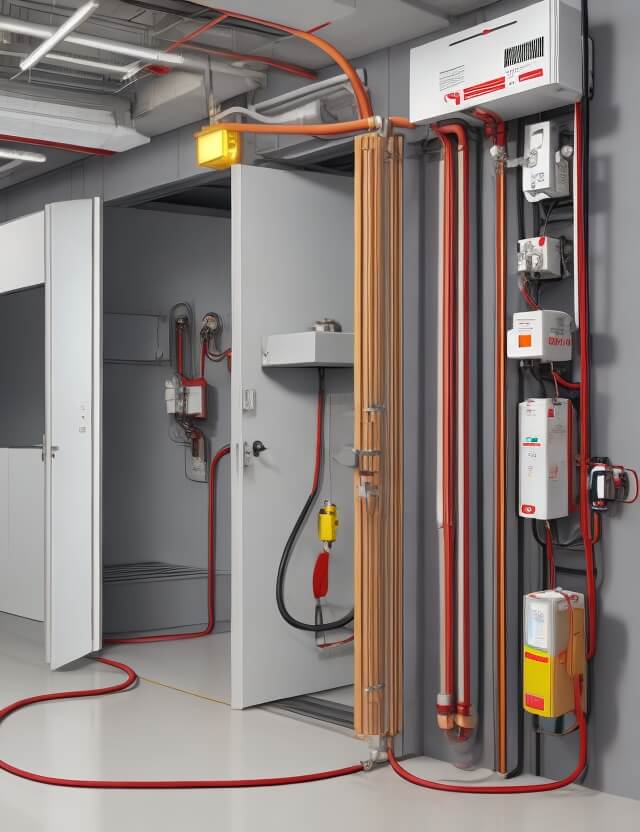
Automated Fire Detection and Alarm System
Introduction
Fire incidents can be catastrophic, both in terms of human lives and property damage. The key to minimizing this damage lies in early detection and prompt action. This article delves into the automated Fire Detection and Alarm System, a mini project designed to detect fires early and alert the occupants of a building.

The Need for Fire Detection Systems
Traditional fire detection methods are often slow and unreliable. In contrast, an automated fire detection and alarm system can quickly sense temperature changes and trigger an alarm, thereby enabling timely evacuation and fire control measures.
Core Components
- Temperature Sensor: The primary sensor for detecting temperature changes.
- 555 Timer IC: Used for timing the alarm.
- Resistors, Capacitors, and Transistors: Basic electronic components for circuitry.
- Cables and Connectors: For internal and external connections.
- Diodes and LEDs: For signal direction and status indication.
- PCB and Breadboards: For assembling the circuit.
- Push Buttons and Switches: For manual control and testing.
Working Principle
The system employs a temperature sensor that continuously monitors the ambient temperature. When a fire breaks out, the temperature rises, triggering the sensor. This, in turn, activates the 555 Timer IC, which sounds the alarm. The alarm continues to ring until manually reset or the temperature returns to a safe level.
Advantages
- Quick Response: The system can detect fires in their early stages, allowing for prompt action.
- Automated: Requires no human intervention for detection and alarm.
- Cost-Effective: Utilizes affordable and readily available components.
How to Build Your Own System
- Circuit Design: Start by designing the fire alarm system circuit diagram, incorporating all the components.
- Assembly: Assemble the components on a PCB or breadboard.
- Testing: Test the system thoroughly to ensure all components are functioning as expected.
- Installation: Once tested, install the system in the desired location.
- Maintenance: Regularly check the system to ensure it remains functional.
Conclusion
The automated Fire Detection and Alarm System is a crucial safety measure that can save lives and property. Its quick response time and automated features make it an invaluable asset for any residential or commercial building.
In order to download the PDF, You must follow on Youtube. Once done, Click on Submit
Follow On YoutubeSubscribed? Click on Confirm
Download Automated Fire Detection and Alarm System PDF






